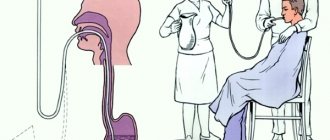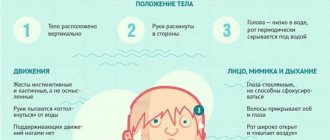The drug "Activated carbon" is a finely porous carbon that is activated due to special processing. This is a sorbent that helps remove substances that are potentially hazardous to health from the body. Due to its high surface activity, coal binds hazardous substances that enter the gastrointestinal tract and, without entering into a chemical reaction with them, removes them from the body.
Pharmacodynamics
It is used as an antidiarrheal agent due to its ability to sorb. It is also a detoxifier and polyvalent antidote. The high activity of the active substance allows you to quickly adsorb toxins, poisons, barbiturates, heavy metal salts, fragments of narcotic and sedatives, waste products of harmful bacteria, hydrocyanic acid and alkaloids even before they begin to be absorbed into the blood from the gastrointestinal tract.
In addition, charcoal helps remove excess production of metabolic products, including urea, bilirubin and cholesterol. A lower activity of the substance towards malathion, methanol and cyanides was noted. If it enters the gastrointestinal tract, it does not irritate the mucous membrane.
If you want to lose weight
Some ladies take activated charcoal for weight loss. It should be taken into account that replacing it with other sorbents, such as white coal, is not recommended. Because the composition of these drugs is different, the effect may not be sufficient.
The calculation of the tablets should be as follows: for every kilogram of weight - one tablet of activated carbon. The entire number of tablets is drunk at one time in the morning before meals. The period of admission is no more than two weeks. At the same time, it is recommended to take multivitamin complexes. The break between taking charcoal and taking vitamins should be at least two hours.
There is another way to lose weight using activated carbon. The number of tablets gradually increases. The tablets are taken three times a day an hour before meals. The course is ten days, after a week you can repeat the dose.
Indications
Activated carbon is prescribed for:
- beginning symptoms of intoxication of unknown origin, like a sorbent;
- food poisoning;
- when symptoms characteristic of salmonellosis and dysentery appear;
- drug poisoning (uncontrolled use);
- drug use;
- alcohol intoxication, as a sobering agent;
- hangover syndrome, as a sorbent;
- allergic reactions of food and medicinal origin;
- chronic flatulence;
- preparatory activities for ultrasound examinations of the abdominal cavity;
- diagnosed renal failure;
- jaundice.
Activated carbon cannot be taken as a single drug. It always acts as an addition to prescribed therapy, accelerating the removal of poisons and helping the functioning of the filtering organs.
When is it prescribed?
Activated carbon has a wide spectrum of action.
It is prescribed for:
- poisoning with stale food;
- problems with digesting food (bloating, diarrhea, etc.);
- overdose and side effects of medications;
- gastrointestinal infections (salmonella, dysentery, etc.);
- acute and chronic pancreatitis, cholecystitis.
It is also prescribed in preparation for various studies of the gastrointestinal tract (X-ray, endoscopy, etc.).
The drug does not enter the bloodstream, but immediately dissolves in the intestines. For this reason, it can be taken even by pregnant women and nursing mothers. Pregnant women in the early stages often experience toxicosis, the symptoms of which are nausea and vomiting. However, expectant mothers can take it only after consulting a doctor.
Contraindications
Patients with:
- diagnosed ulcerative colitis and other ulcerative lesions of the gastrointestinal tract;
- bleeding of the abdominal organs;
- intestinal obstruction;
- intestinal atony.
In addition, patients undergoing treatment with other antitoxic drugs, the effect of which is possible after absorption of the active substance into the blood, should not take activated carbon. This is explained by the fact that charcoal blocks the absorption of drugs, interfering with treatment.
How to take activated carbon
Before you start taking this drug, it is important to know that it removes not only harmful substances from the body, but also useful ones. Therefore, if there is a violation of the intestinal microflora or any viral or infectious diseases, then taking charcoal is not recommended. After all, the drug will also destroy beneficial bacteria that fight harmful ones.
It is important to drink activated charcoal with plenty of water so that the drug is distributed throughout the intestines. The water should be at room temperature.
It should be borne in mind that during long-term and constant use of this drug, vitamins are washed out of the body. Therefore, it is necessary to take multivitamin complexes at the same time.
There is a risk of dysbacteriosis during long-term use of coal. Therefore, it is necessary to take prebiotic agents at the same time.
Directions for use and dosage
The tablets are taken orally with clean drinking water one hour before the intended meal or two hours after the meal. If the patient is forced to take other medications, then charcoal consumption is permissible 1.5-2 hours after taking another drug.
The dosage is calculated based on the patient’s weight, degree of intoxication and age:
- a single dose for adults is 8 tablets (2 g) - for mild symptoms of poisoning, 12 pcs. (3 g) tablets for obvious symptoms of food poisoning.
- a single dose for children is calculated taking into account weight: 1 g of coal per 1 kg of weight - for severe symptoms of increased gas formation or food allergies.
Both adults and children should take charcoal three times a day.
The duration of the course, as a rule, depends on the patient’s symptoms. Usually it does not exceed 3-4 days. For long-term and acute allergic reactions, treatment can last up to 14 days.
What is activated carbon
These tablets consist of:
- activated carbon;
- black salt;
- starch.
Black salt is a pharmaceutically produced chemical that is an enterosorbent. It contains useful microelements.
The reason for adding black salt to coal is that starch can reduce the adsorbing effect of coal. Salt, on the contrary, increases this effect.
One tablet of activated carbon weighs about 0.6 grams. The property of the drug is to remove from the human body all harmful substances and compounds that enter there with medications, poor-quality food or water. That is why after taking it there is relief from the symptoms of intoxication.
Side effect
A side effect observed in all patients without exception is discoloration of the stool in black. Dark plaque on teeth and fillings is possible if the patient chews the tablet before swallowing it. This may also cause the saliva to have black spots.
If the recommended doses are exceeded, activated carbon can cause constipation, because as a result of its excessive intake, hard and dense feces are formed that are difficult to move through the intestines.
If taking the sorbent causes any other negative reaction, you should immediately inform your doctor.
Method of use
Activated charcoal is taken between meals, and the interval between food and charcoal intake should be about two hours. Some people cannot swallow whole tablets, especially children. Then they are crushed in advance or chewed thoroughly.
The dosage is easy to calculate: for every kilogram of a person’s weight there should be 100 mg of activated carbon. The total dose should be divided into three doses. The duration of exposure to the drug depends on the severity of the disease. In case of poisoning, it is enough to take a day or two. If you have pancreatitis or another gastrointestinal disease, you can take it for several weeks. You should definitely consult a doctor before starting.
If you suffer from flatulence, you need to take the drug every four hours for three days. You can extend the reception up to a week. If there is a process of putrefaction in the intestines, it should be taken three times a day for two weeks.
The drug is considered safe, but sometimes side effects such as constipation, diarrhea, and impaired absorption of substances occur. But this happens with prolonged use of coal.
How to get rid of smell in the refrigerator using activated carbon
Activated carbon is the main component of all air filters, including those designed to eliminate odors in the refrigerator. It is worth purchasing an expensive filter egg for the refrigerator once and disassembling it to make sure of this. In order to get rid of an unpleasant odor, it is enough to remove 30 tablets of activated carbon and place them in a fabric bag. Such a filter can be placed on the door or in the farthest corner of one of the shelves. For older generation refrigerators that do not have a ventilation system, it is recommended to make two filter bags. They are placed on the lower and upper shelves.
Indications for use of activated carbon
Activated carbon is a medicine that naturally has a number of indications for its use. In addition to the fact that charcoal can be taken for preventive purposes in cases of suspected food poisoning, it will also be relevant for the following diagnoses:
- increased acidity of gastric juice during exo- and endogenous intoxications:
- dyspepsia,
- flatulence,
- rotting and fermentation of food masses in the gastrointestinal tract,
- hypersecretion of mucus, gastric juice, hydrochloric acid,
- diarrhea;
- alkaloids,
- glycosides,
- salts of heavy metals,
- food intoxication;
- dysentery,
- salmonellosis,
- burn disease in the stage of toxemia and septicotoxemia;
- renal failure,
- chronic hepatitis,
- acute viral hepatitis,
- cirrhosis of the liver,
- gastritis,
- chronic cholecystitis,
- enterocolitis,
- cholecystopancreatitis;
- atopic dermatitis,
- bronchial asthma;
It is relevant to use activated carbon at the stage of preparation for x-ray and endoscopic examinations. This is done to reduce the content of gases in the intestines.
However, activated carbon also has a number of contraindications. It should be used with caution and not contrary to doctor’s prescriptions for ulcerative lesions of the digestive tract. For such diseases it is most often contraindicated - peptic ulcers of the stomach and duodenum, ulcerative colitis, bleeding from the tract. It is also not the best solution to combine the intake of activated carbon with antitoxic drugs, the action of which is preceded by absorption.
In most cases, activated carbon is favorably accepted by the body, but side effects may also develop. Among them:
- dyspeptic symptoms - constipation, diarrhea;
- hypovitaminosis;
- decreased absorption of nutrients and macronutrients in the digestive tract;
- hemoperfusion using activated carbon can cause hypotension, thromboembolism and hemorrhage, as well as hypoglycemia and hypocalcemia.
Side effects tend to develop with prolonged use of activated carbon .
What is activated carbon made from? Is it possible to eat it, harm and benefit?
Of course, not all charcoal you come across is worth swallowing - only activated charcoal, that is, one that has undergone certain processing, can be eaten. For the production of activated carbon, the fossil most often used is coal, which is not for nothing called useful - coal. It contains the remains of ancient plants, which over several hundred million years have changed significantly due to the high pressure of the earth's crust and high temperature.
Coal is mined on an industrial scale and is most often used as fuel. In order to “activate” it, the coal is subjected to pyrolysis (decomposition at high temperatures), then kept at high temperatures with water vapor or carbon dioxide, sometimes using an acid or alkali, as a result of which the coal becomes porous and its surface area increases significantly. The area of one gram of activated carbon can reach 1500 square meters!
Charcoal is even added to toothpaste: it whitens enamel
Activated carbon has an adsorption effect - it is important not to confuse it with an absorbent one: carbon particles do not absorb other substances, like a sponge, but attract and hold carbon molecules, for example, some poison, due to weak attraction between uncharged molecules. The main advantage of activated carbon is that it is not digested in the human gastrointestinal tract and is not absorbed, but “removes” associated toxic and irritating substances from the body.
If you “catch” an intestinal infection or are poisoned by food, doctors advise taking 50 to 100 grams of activated charcoal (5 to 10 packs) at once within one hour after the first symptoms. 2-3 tablets will not help at all.
Black cappuccino is prepared using activated carbon
Since activated carbon is allowed to be consumed as food, it is often used as a dietary supplement to various drinks and dishes. It is believed that a small amount of it will not harm, but will only be beneficial. They add it to coffee for a wow effect - a black and white cappuccino or latte really looks impressive.
Charcoal mineral water with chia seeds is a real superdrink
Cold detox drinks based on activated carbon are also popular - just dissolve a few tablets in sparkling mineral water and pour in chia seeds. You can take this coal mineral water with you, for example, to a sports club. Coal is often added to ice cream, believing that such a dessert will not harm, because along with coal, “everything extra” will also benefit.
Coal is also added to baked goods - black burgers with black buns, black bread, black crackers and even black croissants are in fashion. It’s just important to explain that the bread is not burnt, but quite healthy.
Coal-colored baked goods - no longer ashamed
It is important to remember one thing, like any substance, activated carbon also has contraindications. For example, gastric and duodenal ulcers, ulcerative colitis and other gastrointestinal diseases, as well as individual intolerance.
Long-term use of activated carbon can disrupt the normal functioning of the stomach and lead to problems with the absorption of vitamins, microelements, fats, proteins and other beneficial substances.









